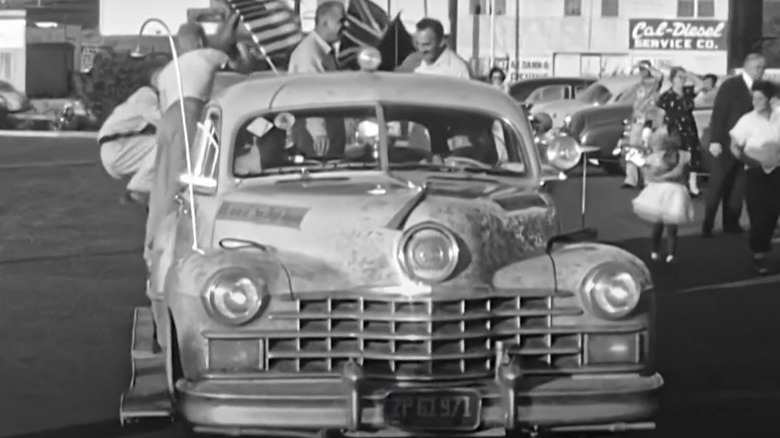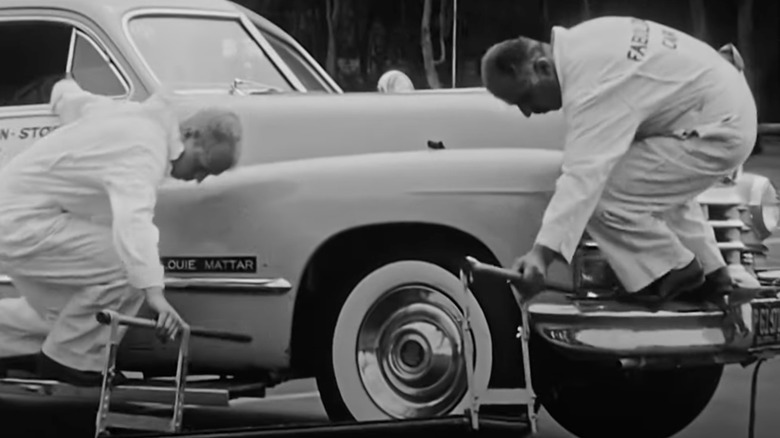Could You Make A Cross-Country Road Trip Without Stopping? These Three Men Did, In 1952
The great American road trip has been a part of pop culture since cars became commonplace. Jack Kerouac's "On the Road" and John Steinbeck's "Travels With Charley" often land on lists of the greatest American novels, and road trip films as varied as "Thelma and Louise," "National Lampoon's Vacation," and "Midnight Run" have captivated moviegoers for decades.
Many of us have taken cross-country road trips, and this experience can teach us a great deal about the natural wonders of the country and the incredible diversity among the more than 330 million people living here. Depending on your route, it is approximately 3,000 miles from one coast of the United States to the other, a trip that can take as little as three days if you stick to the interstates and keep stops to a minimum. Several years before the interstate system had been developed, three men drove a 1947 Cadillac Fleetwood sedan from Los Angeles to New York and back without stopping the car, not for fuel, snacks, the bathroom, or even a red light or traffic jam. This required significant modifications to the car and a coordinated effort from law enforcement and media members across the nation.
Here are the details of that remarkable week-long 6,320-mile round trip, the unique vehicle that made the trip, and the man who built it.
Louie Mattar was a US Navy Veteran
Detroit native "Screwy Louie" Mattar moved to San Diego after working in the auto industry and serving in the U.S. Navy, where he built minesweepers. Once he settled in California, Mattar began working on the Cadillac that would eventually become known as the Perpetual Motion Machine. Mattar originally intended the car to be a camping vehicle and outfitted it with a 50-gallon water tank, television, sink, toilet, shower, washing machine, and ironing board.
There was also an electric cooking stove, a bar, a soda fountain, and an in-dash hookah. Mattar designed multiple systems to maintain and refuel the car while in motion, including retractable running boards and a jack that could lift the car at low speeds so he and his two co-pilots could change tires on the go. The hood had transparent panels so the driver could see ahead while it was raised for maintenance, and Mattar built a system that would automatically refresh the engine oil every 1,000 miles and another that would keep the radiator topped off.
All of the modifications took Mattar seven years and cost $35,000 — equal to a little more than $400,000 in today's money.
The car had a multi-purpose trailer
The car towed a trailer that carried the team's supplies: spare parts and tires, 230 gallons of gasoline, 15 gallons of motor oil, and 30 gallons of water for drinking, washing, and cooking. The trailer also served as a hosting platform for the journalists who would jump on as the Caddy rolled through town, riding along for a while to chat with Mattar and his two friends.
Despite the 230-gallon supply, the car still had to be refueled three times at airfields along the way without bringing it to a stop. Mattar also coordinated with police in towns on the route to help escort the car through stop signs and traffic signals.
In 1954, Mattar took the Perpetual Motion Machine on another non-stop road trip from Anchorage, Alaska, to Mexico City.
Mattar died in 1999 at the age of 89 but left the car to his grandson Dan, who loaned it to the San Diego Automotive Museum, where it remains on display today.

